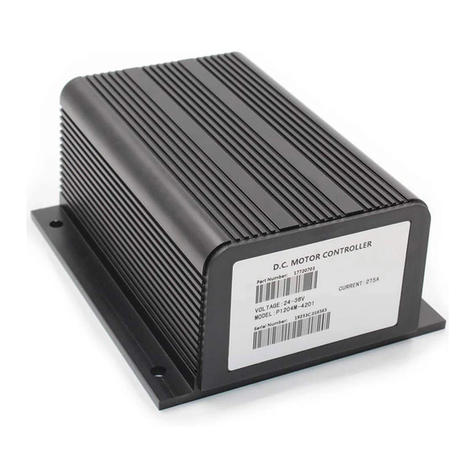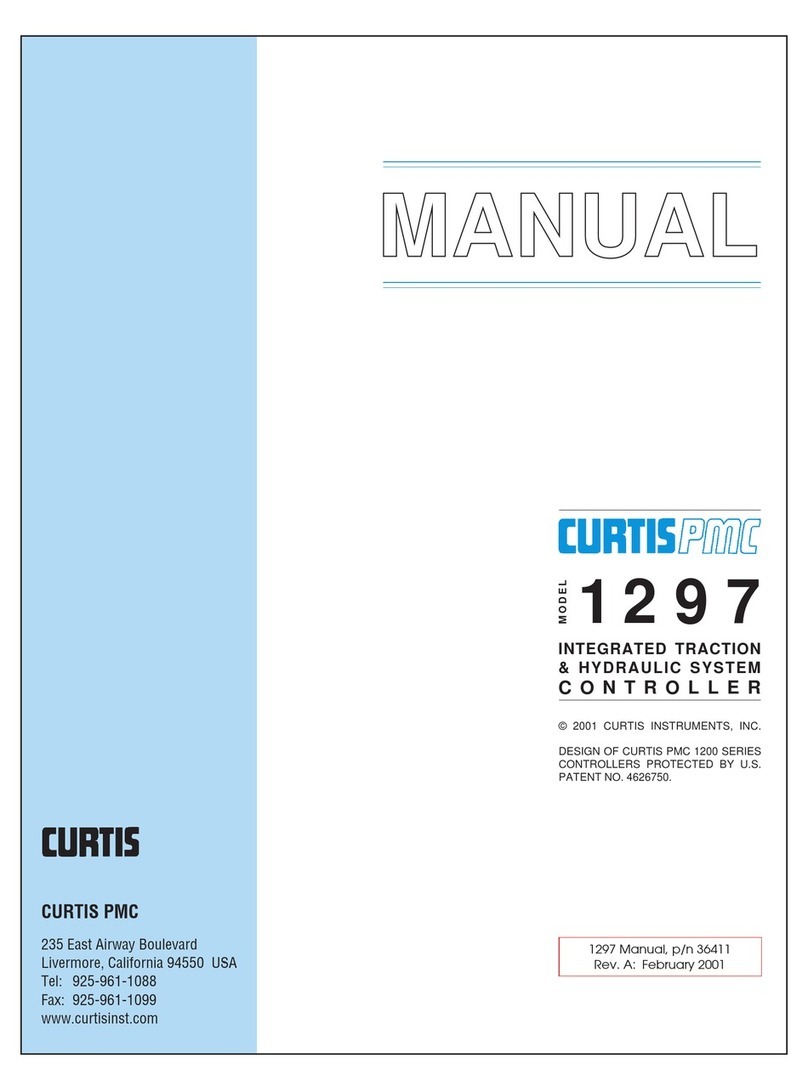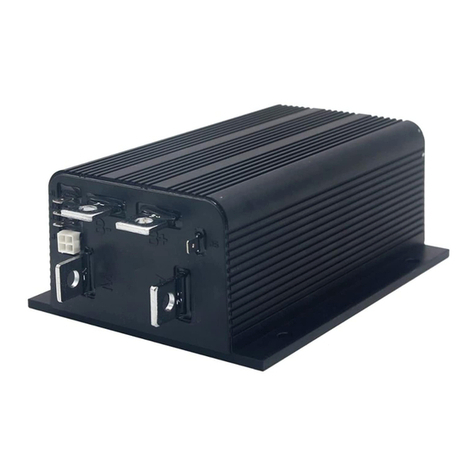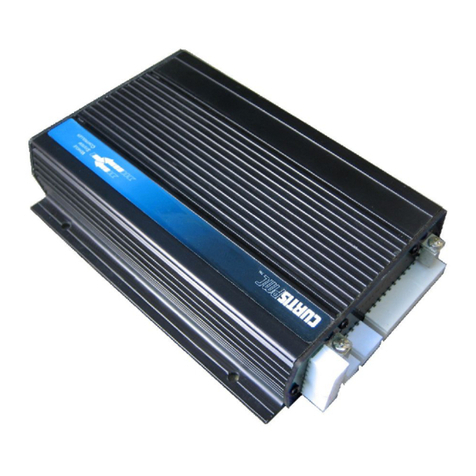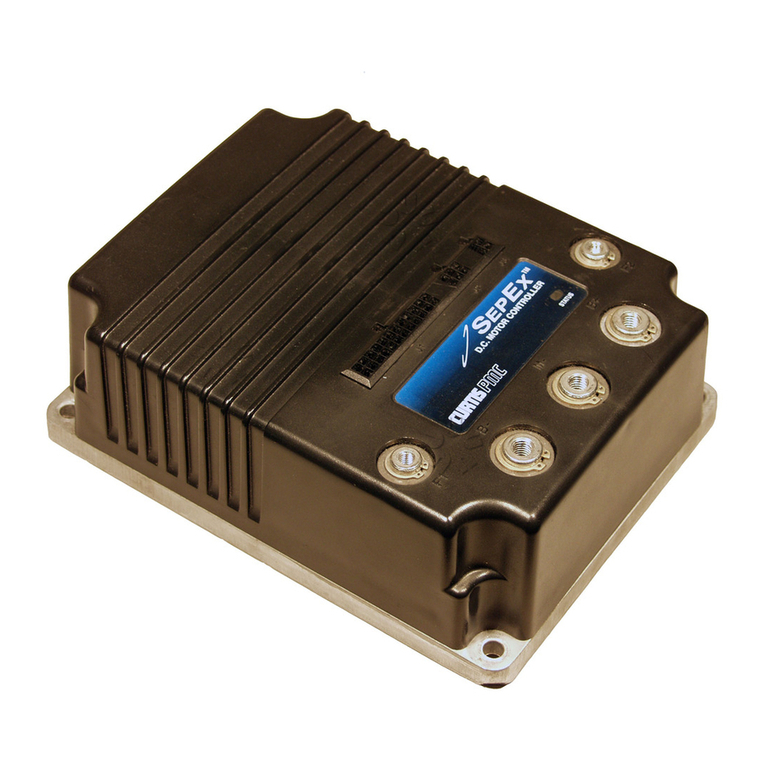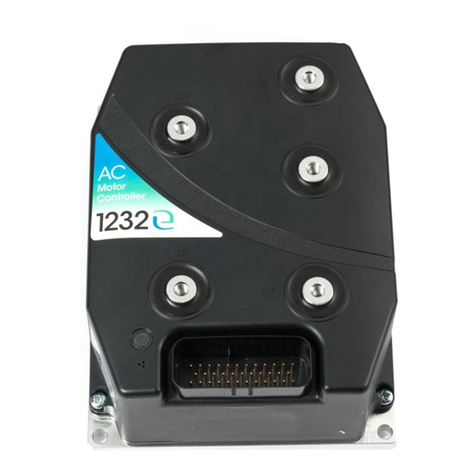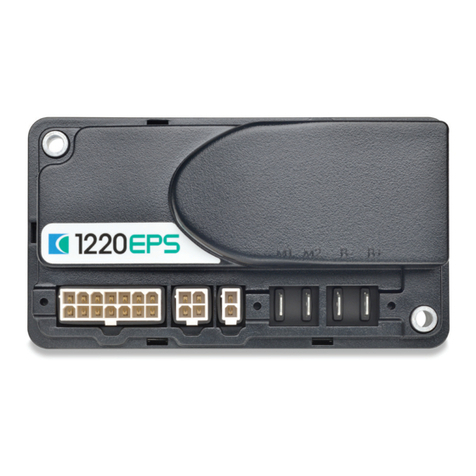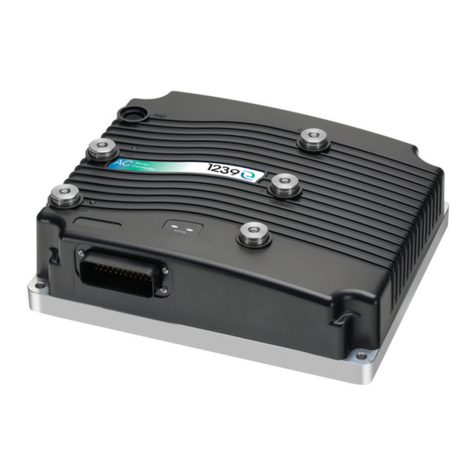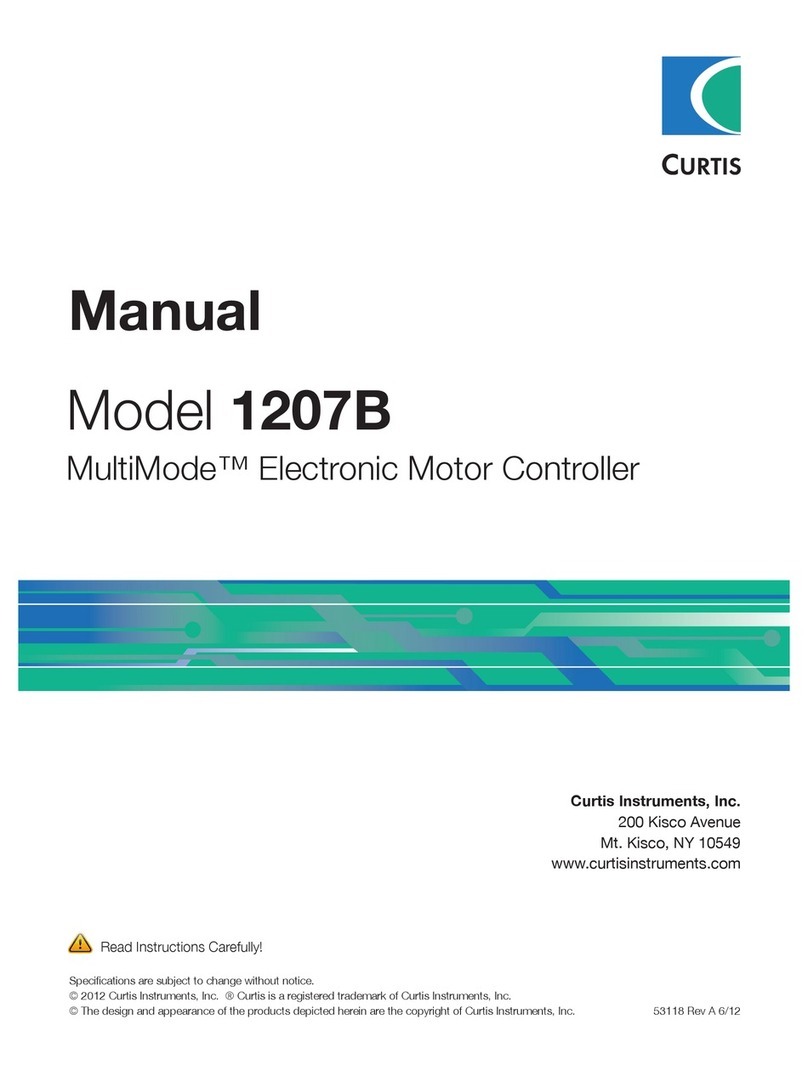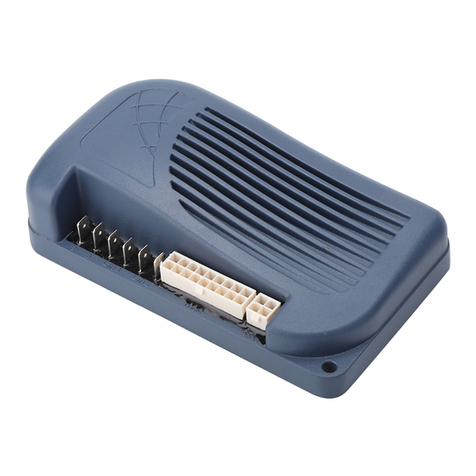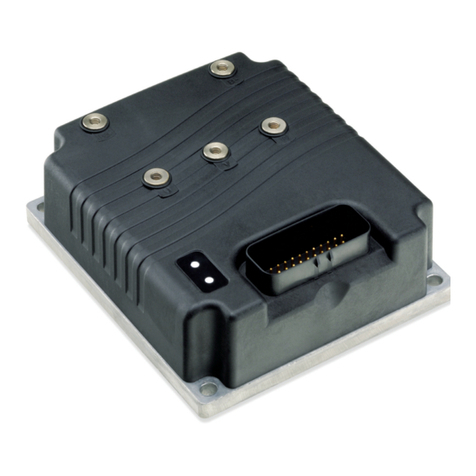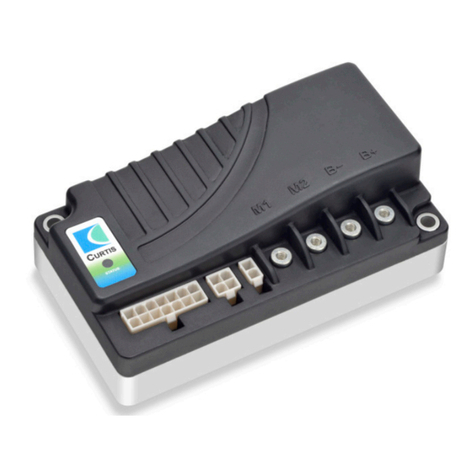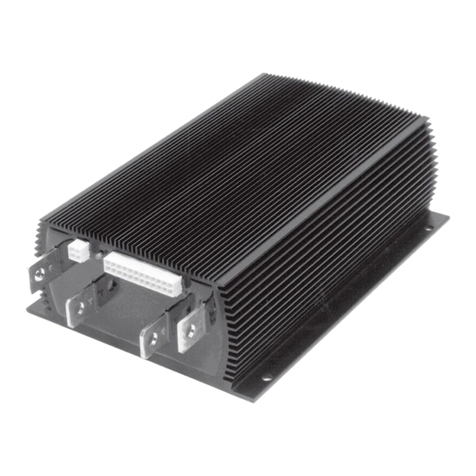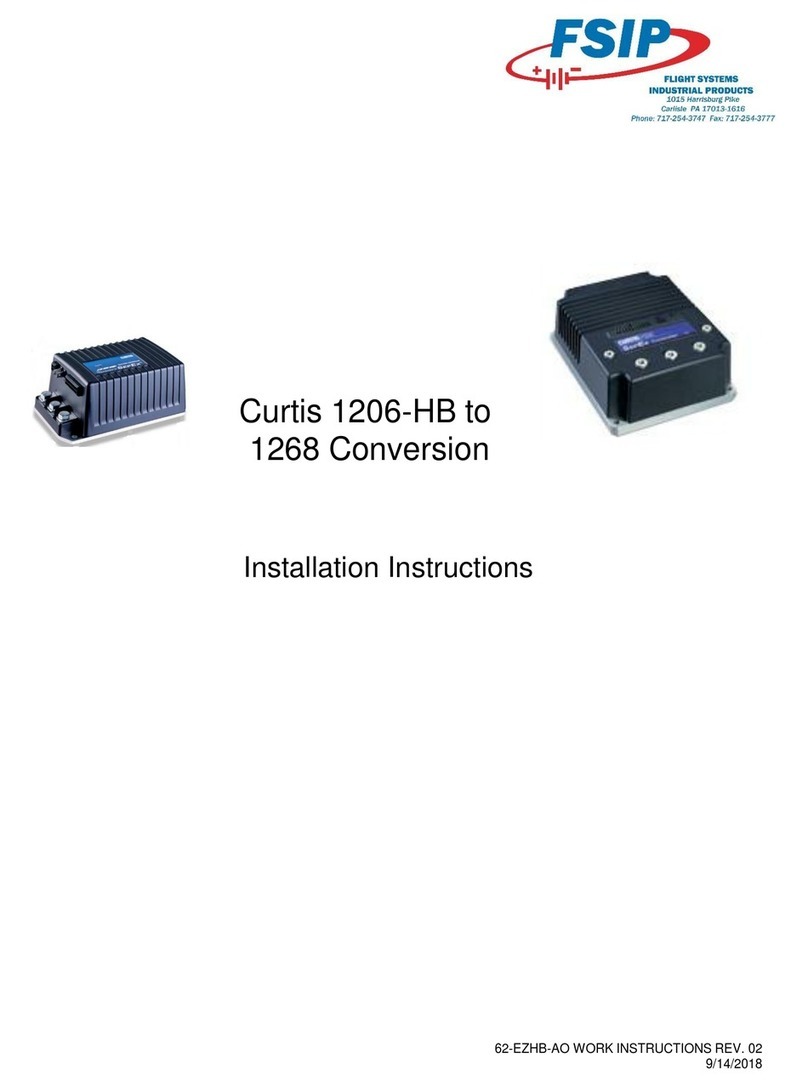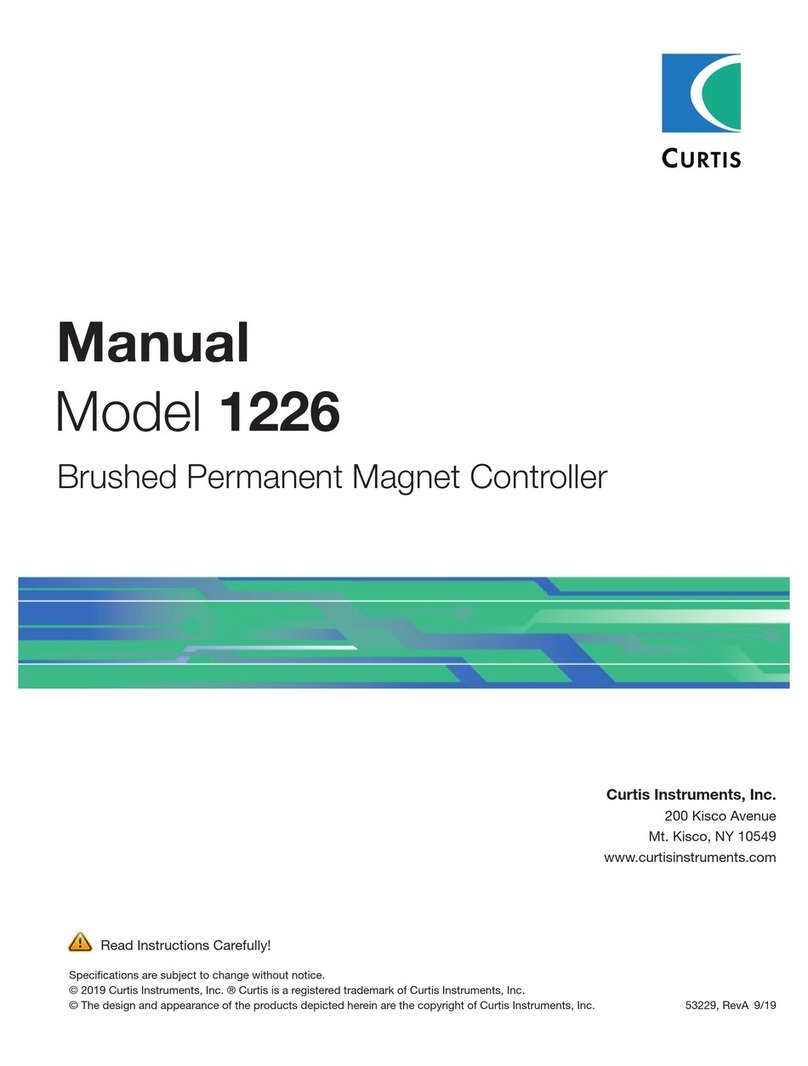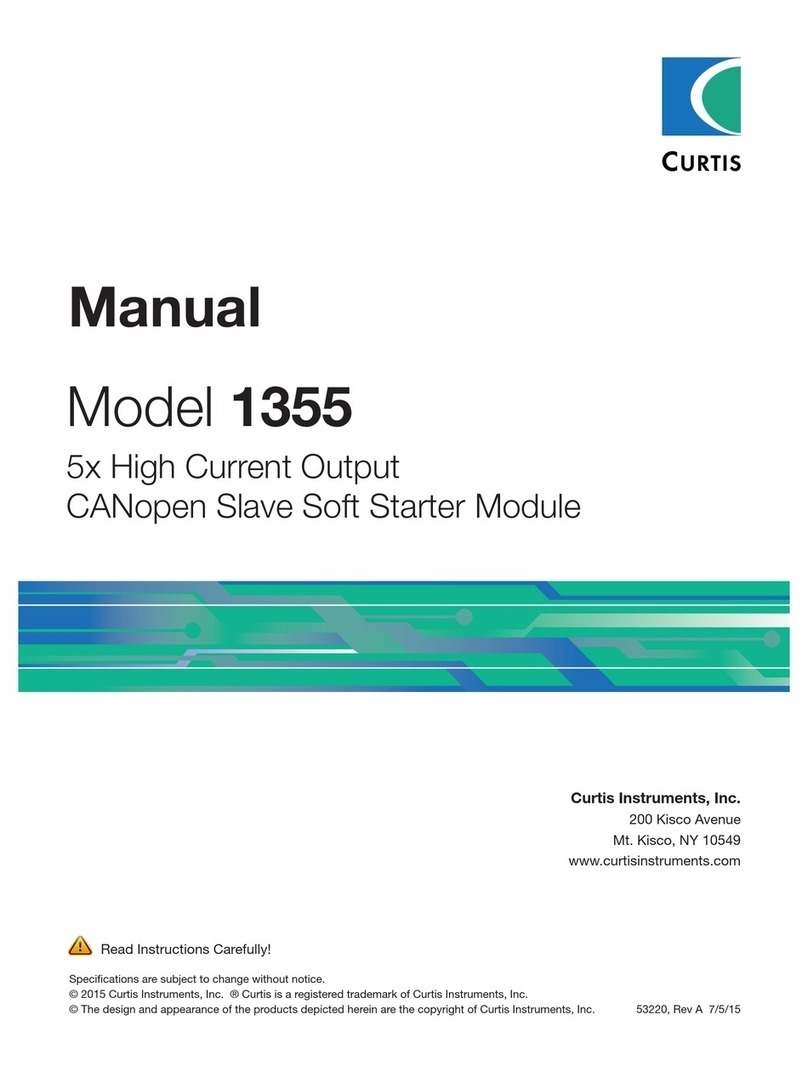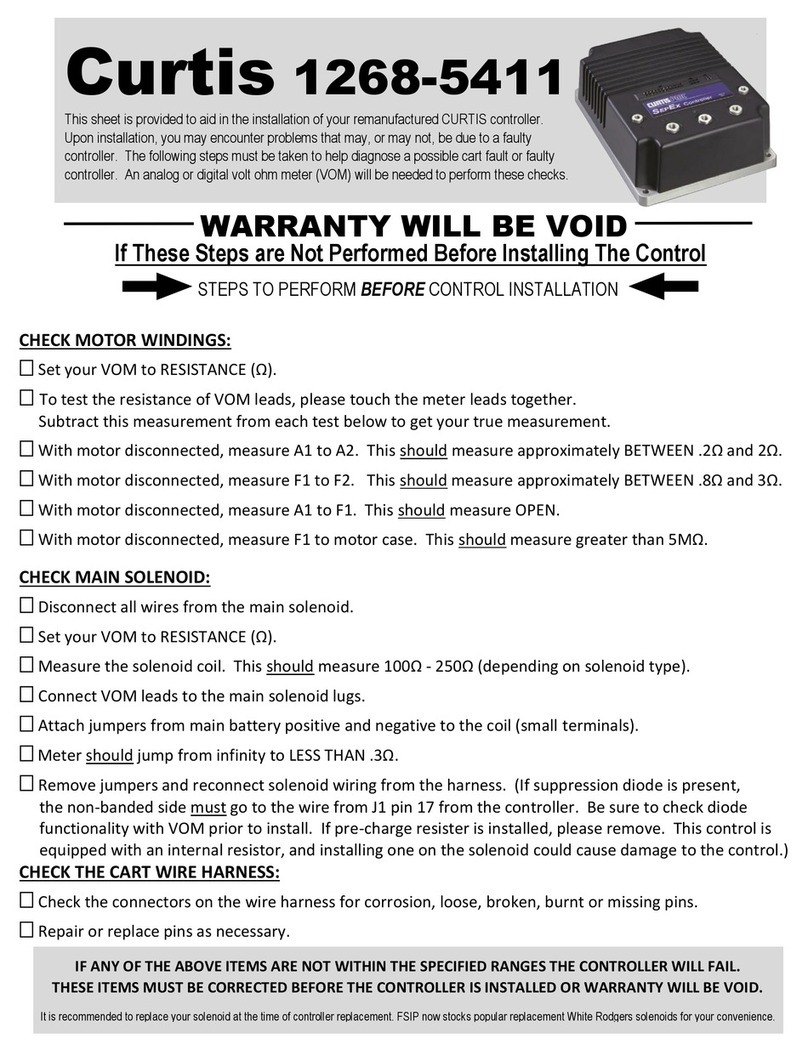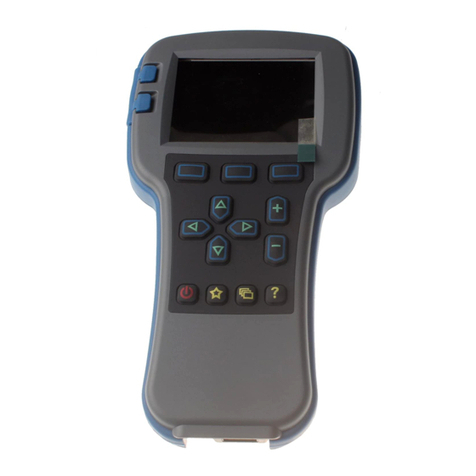
2 Curtis 1298 Manual, OS 11
✓ Adaptation of control algorithm to motor temperature variation so
optimal performance is maintained under widely varying conditions
✓ Real-time battery current, motor torque, and power estimates available
✓ Power limiting maps allow performance customization for reduced motor
heating and consistent performance over varying battery state-of-charge
✓ Powerful operating system allows parallel processing of vehicle control
tasks, motor control tasks, and user configurable programmable logic
✓ A wide range of I/O can be applied wherever needed, for maximum
distributed system control
✓ Internal battery-state-of-charge, hourmeter, and maintenance timers
✓ Easily programmable through the Curtis 1311 handheld programmer
and 1314 PC Programming Station
✓ CAN bus connection allows communication with other CAN bus
enabled system components such as the Curtis TH-1 tiller head;
protocol meets CANopen standards; other 11-bit identifier field
CAN protocols can be custom configured through VCL
✓ Field-programmable, with flash downloadable main operating code
✓ Thermal cutback, warning, and automatic shutdown provide protection
to traction motor and controller
✓ Rugged sealed housing and connectors meet IP65 environmental sealing
standards for use in harsh environments
✓ Insulated metal substrate power base provides superior heat transfer for
increased reliability
✓ Built-in Dual Drive software allows easy setup and control of typical
dual-drive vehicles, without VCL.
Note: If you have a dual-drive application, see the Dual Drive
Addendum to the 1298 manual, part number 38272-DD.
Familiarity with your Curtis controller will help you install and operate it prop-
erly. We encourage you to read this manual carefully. If you have questions,
please contact the Curtis office nearest you.
Using the 1311 handheld programmer, you can set up the controller to per-
form all the basic operations. In this manual, we first show you how to wire
your system and adjust its performance characteristics without the use of VCL.
Then, in Section 7, we show you how to adjust the system using VCL (Vehicle
Control Language), an innovative software programming language developed
by Curtis. VCL interacts with a second, independent software realm resident
in a powerful logic controller embedded within the 1298 controller.
1 — OVERVIEW
☞
NOTE: The 1311
handheld programmer
has been superseded;
see Appendix D.
